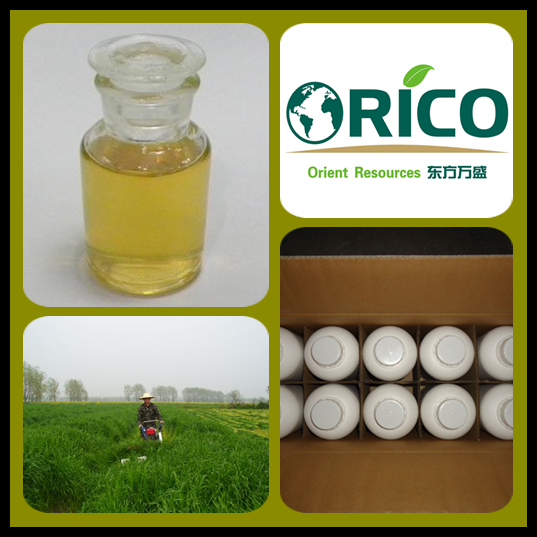

Prix FOB
Obtenir le dernier prix1 ~ 100 / Kilogram ( Negotiable )
|100 Kilogram Minimum Order
Pays:
China
N ° de modèle:
-
Prix FOB:
1 ~ 100 / Kilogram ( Negotiable ) Obtenir le dernier prix
Localité:
-
Prix de commande minimale:
1 per Kilogram
Commande minimale:
100 Kilogram
Packaging Detail:
200L/Drum
Heure de livraison:
Within 15 days upon receipt of the official order
Capacité de Fournir:
20 Metric Ton per Month
Payment Type:
L/C, T/T
Groupe de produits :
Personne à contacter Mr. Elliott
Room D1.7/F international conference center. No 2. Jida road, Zhuhai, Guangdong

Use
The principal use is for the
control of broad leaf weeds in cereal crops-including wheat, maize,
rice and sorghum-and grassland and turf areas. It is also widely
used in mixtures with other herbicides to provide weed control in
forestry, orchards and non-crop areas, and for the control of
aquatic weeds.
The phenoxy acid group of
herbicides are probably one of the widest used herbicide chemcial
classes. The US, South America, Europe and the former Soviet Union
are major markets for 2,4-D-weed control on US wheat relies on
little else-and global use is predicted to grow over the next
decade(3).
In the US where it was the third most used pesticide in the early
to mid 1990s, over 31,000 tonnes of 2,4-D was used
annually(4).
In the UK it is among the top six herbicides used by UK local
authorities, and it ranked seventh among herbicides used on
grassland and fodder crops and twentieth among herbicides used in
orchards in 1992(5,6).
Overall the area of land treated with 2,4-D in UK agriculture
(excluding amenity use) declined by 83% during the period
1984-1994(7). 2,4-D is also used widely in developing
countries: India, for example, used 1,300 tonnes in
1994-5(8).
Acute
toxicity
2,4-D is a WHO Class II 'moderately
hazardous' pesticide. This places it in the same class as
endosulfan, lindane, paraquat and toxaphene. It has an LD50 of 375
mg/kg in the rat with evidence suggesting a similar level of
toxicity in humans(9).
Occupational exposure to 2,4-D has produced serious eye and skin irritation. Other symptoms of 2,4-D poisoning include nausea, weakness and fatigue, and in some cases neurotoxic effects including inflammation of nerve endings(10). Some medical reports from practitioners who have treated victims of acute exposure to 2,4-D mention severe and sometimes long lasting or even permanent symptoms. These include, as well as those listed above, diarrhoea, temporary loss of vision, respiratory tract irritation, confusion, numbness and tingling, bleeding and chemical hypersensitivity(11).
A recent review of 2,4-D by the
UK Advisory Committee on Pesticides (ACP) noted that "Approval
holders must generate a number of toxicology/operator exposure
studies to allow a full risk assessment to be
made."(12)
Chronic
effects
It seems that long term exposure to
2,4-D can affect different animals in a wide variety of ways. Rats
for example were found to be largely unaffected when fed moderately
large amounts in their diet over long periods, although signs of
kidney pathology were demonstrated. Dogs however died when fed
smaller amounts over shorter periods. A human fed 16.3 grammes over
32 days showed severe symptoms of
intoxication(13).
It also seems that the various
chemical forms of 2,4-D can have different toxic effects. Acid,
salt and various esters differ in all their measured toxic effects
to some extent, but the majority of toxicity data relates only to
the acid.
Fate in the
environment
2,4-D has low soil sorbtion and a
high potential for leachability(23). Indeed 2,4-D residues have
been recorded many times both in water company monitoring
programmes and by the UK Department of the Environment(24,25). It
has also been detected in groundwater supplies in a number of US
States and in Canada(26). In 1994, 3% of groundwater samples,
and in 1995, 4% of surface water samples in England and Wales
exceeded the EU standard(27).
Its high potential for water contamination has led to the inclusion of 2,4-D in the EC Priority Candidate List of chemicals to be considered for inclusion among the chemicals most tightly controlled to prevent water pollution. 2,4-D is also a priority candidate for inclusion in the UK Department of the Environment Red List which has a similar function.
Wildlife
Some formulations of 2,4-D are
highly toxic to fish while others are less so. Aquatic
invertebrates do not in general seem to be very sensitive to 2,4-D.
Moderate exposure of honey bees to 2,4-D severely impaired
reproduction. Toxicity to birds is low to moderate(28).
However, the ACP noted "Insufficient data are available to fully
assess the safety of in or near water uses to aquatic life" and
"Approval holders must generate a number of studies using 2,4-D and
its derivatives in order to allow a full assessment of the risk to
wildlife to be made."
Conclusions
2,4-D is a pesticide that has been
heavily used in agriculture all over the world for some fifty years
or more. Alarmingly the ACP Evaluation has highlighted a large
number of major data gaps-covering human health effects, aquatic
and wider environmental risk. In addition to the number and the
range of these data gaps, there continue to be concerns about long
term adverse effects of 2,4-D on human health and water
pollution.
| Pays: | China |
| N ° de modèle: | - |
| Prix FOB: | 1 ~ 100 / Kilogram ( Negotiable ) Obtenir le dernier prix |
| Localité: | - |
| Prix de commande minimale: | 1 per Kilogram |
| Commande minimale: | 100 Kilogram |
| Packaging Detail: | 200L/Drum |
| Heure de livraison: | Within 15 days upon receipt of the official order |
| Capacité de Fournir: | 20 Metric Ton per Month |
| Payment Type: | L/C, T/T |
| Groupe de produits : | Herbicides |